Weird title, you're thinking. Keep reading. In the NEO program with me are other research nomads who regularly jump back and forth between Montreal and Panama. Some chase after butterflies in the rainforest, others dig up snails on the beach, and I hop river to river in search of my fish. Not everyone, however, is here for Panama’s wildlife.
For the past year, my friend Divya has been studying the transformation of culture and land use in a small indigenous Emberá community called Piriatí. Aside from conducting interviews and organizing cultural activities, she built friendships and has lived there long enough to essentially become adopted by the community.
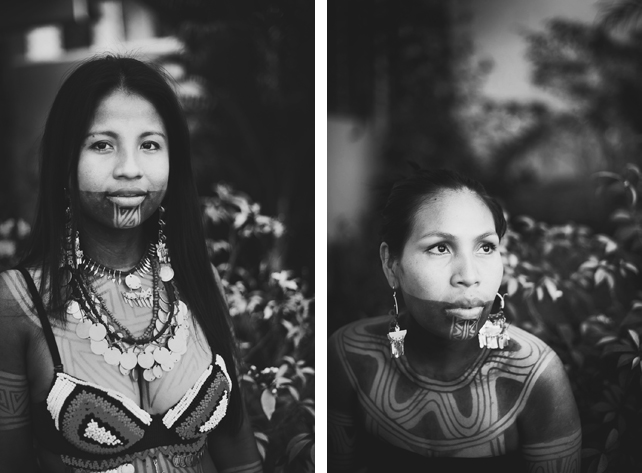 When one of her friends from the community turned 30, we organized a quick portrait session as a gift. In the pictures, you'll see Raquel, the birthday girl, along with her friends Mara and Malala, all wearing the typical brightly patterned skirts that Emberá women wear (parumas). You'll see the jewelry made of beads and silver coins, some of them dating back to the 1800s. And of course, you'll see the body paint (jagua). In the picture below, the 3 jagua patterns each represent an animal: a snake, turtle and crocodile.
When one of her friends from the community turned 30, we organized a quick portrait session as a gift. In the pictures, you'll see Raquel, the birthday girl, along with her friends Mara and Malala, all wearing the typical brightly patterned skirts that Emberá women wear (parumas). You'll see the jewelry made of beads and silver coins, some of them dating back to the 1800s. And of course, you'll see the body paint (jagua). In the picture below, the 3 jagua patterns each represent an animal: a snake, turtle and crocodile.
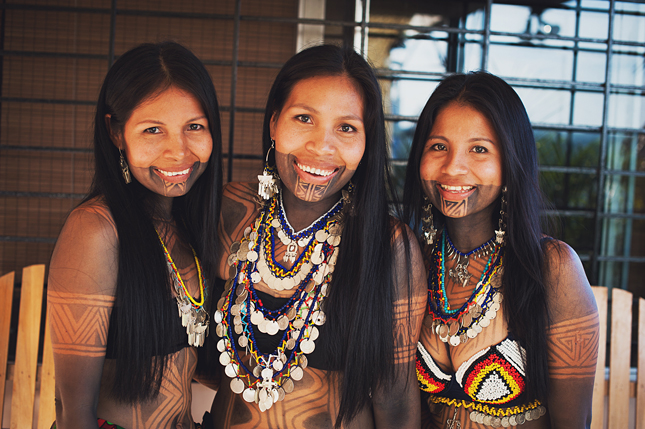
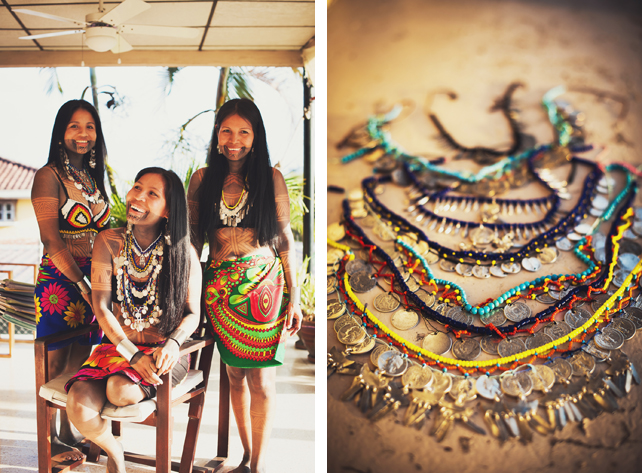
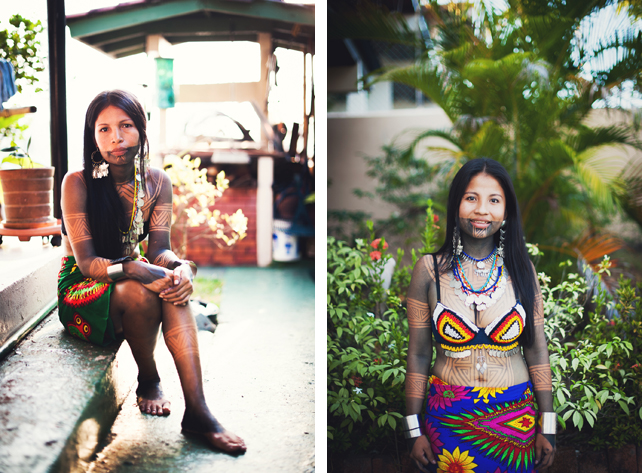 We received thanks in the currency of jagua tattoos. With a thin reed in her dextrous hand, Mara delicately traced out the patterns on our arms, occasionally dipping the reed in the black-blue jagua. This ink, extracted from boiled Genipa americana seeds, remains on the skin for a few weeks until the surface layer of the skin is naturally exfoliated away. To keep mine as long as possible, I've acquired an unhealthy paranoia that keeps anything from touching my left forearm. Still looks great!
We received thanks in the currency of jagua tattoos. With a thin reed in her dextrous hand, Mara delicately traced out the patterns on our arms, occasionally dipping the reed in the black-blue jagua. This ink, extracted from boiled Genipa americana seeds, remains on the skin for a few weeks until the surface layer of the skin is naturally exfoliated away. To keep mine as long as possible, I've acquired an unhealthy paranoia that keeps anything from touching my left forearm. Still looks great!
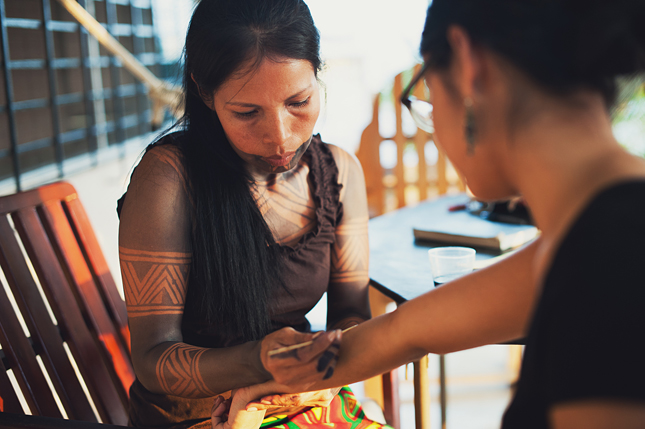
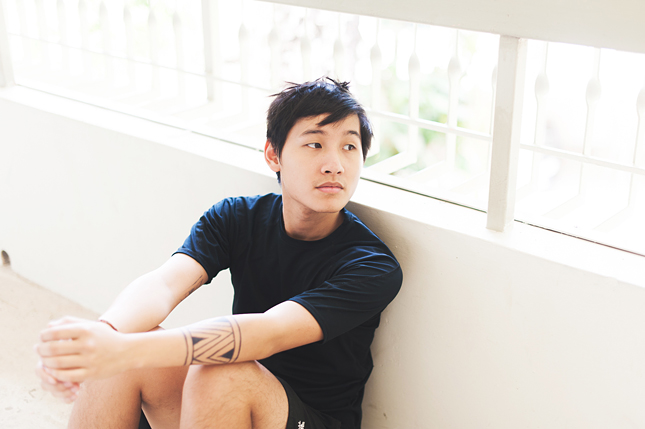 Although it only took Mara a few minutes to trace ours, more intricate and elaborate patterns sometimes require several hours, an exercise in patience for both artist and canvas. When you take into account that many people in the community become fully painted for certain celebrations, you can imagine how laborious the process becomes.
Although it only took Mara a few minutes to trace ours, more intricate and elaborate patterns sometimes require several hours, an exercise in patience for both artist and canvas. When you take into account that many people in the community become fully painted for certain celebrations, you can imagine how laborious the process becomes.
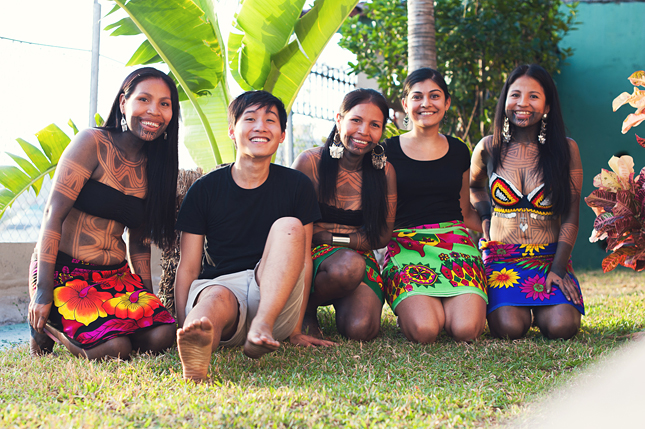
Now let's switch gears and talk photography. If you've read the last post, you know that I don't have too much equipment with me currently. All pictures you saw here were taken with the 50mm 1.4G AF-S. I love this focal length for portrait photography. It's wide enough so you can make environmental portraits, but you can also go in tight for headshots Don't be misguided; the 100$ 50mm 1.8 AF-D would have done the job just as well.
Because our shooting location was limited to just a small house and its hectic backyard, I spent my first 10 minutes looking for potential backdrops. It's an active process, more than just walking around. It's finding good light, changing your point of view, identifying which angles remove undesirable elements of the background from the frame, seeing objects not as subjects, but rather as lines, shapes and colours. A common mistake when looking for backdrops is trying to find one that looks attractive as a subject on its own. One common example that pops into mind are portraits in front of city skylines. That skyline may look great as a subject, but not necessarily as a backdrop in a photograph. An unsightly wall garnished with dog pee stains coated with an uneven paint job because there wasn't much paint left and it's on the side of the garden where no one goes anyway because of the creepy neighbour, on the other hand, may just be the perfect backdrop you're looking for. As a subject? No way. But set at a good distance away, blended into a uniform blur that helps the person pop out? Maybe.
Let's recap. You want to shoot a portrait.
Find a spot with good light. (I realize that this step sounds more simple than it is. I could cover this in a future post.)
Imagine the subject standing there and find the best shooting angle to optimize the background, visualizing it not as a subject, but how it would look once the camera focuses on the subject in front.
With practice it'll become intuitive.

